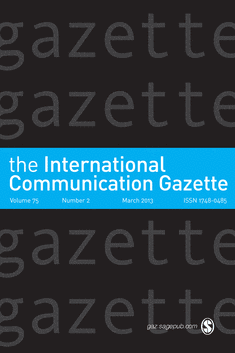
International Communication Gazette
Scope & Guideline
Illuminating Trends in the Evolving Communication Landscape
Introduction
Aims and Scopes
- Intercultural Communication:
The journal emphasizes the study of communication across different cultures, exploring how cultural contexts shape media narratives, audience perceptions, and communication practices. - Media and Gender Studies:
A significant focus on the intersection of media and gender, investigating the representation of gender roles in various media formats and the impact of media on gender identity and norms. - Crisis Communication:
The journal addresses media roles during crises, including public health emergencies and geopolitical conflicts, analyzing how communication strategies influence public perception and response. - Political Communication:
It explores the relationship between media, politics, and public opinion, focusing on how media framing and narratives affect political discourse and citizen engagement. - Media Policy and Governance:
The journal examines the implications of media policies on communication practices, discussing issues related to media ethics, regulation, and the impact of technology on governance. - Global Media Studies:
A core area of focus is the analysis of global media flows, including how transnational media shapes cultural identities and political landscapes across different regions.
Trending and Emerging
- Social Media and Its Impact on Society:
There is a growing emphasis on the role of social media platforms in shaping public discourse, identity formation, and community engagement, particularly in the context of political movements and social change. - Digital Citizenship and Participation:
Emerging themes around digital citizenship explore how individuals engage with media in the digital age, focusing on issues of access, representation, and the role of technology in civic participation. - Media and Mental Health:
Research exploring the relationship between media consumption and mental health outcomes is increasing, particularly in light of the COVID-19 pandemic and the rise of online communication. - Transnational Media Practices:
An increasing focus on how media operates across borders, analyzing the influence of transnational media flows on local cultures and identities, reflects the global interconnectedness of media. - Environmental Communication:
The journal is seeing a rise in studies related to environmental issues and climate change communication, addressing how media shapes public understanding and action on these critical topics.
Declining or Waning
- Traditional Journalism Practices:
There has been a noticeable decline in studies focused solely on traditional journalism practices, as the field increasingly shifts towards examining digital and participatory journalism. - Media Representation of Non-Western Cultures:
Research specifically examining the representation of non-Western cultures in Western media has diminished, likely due to a growing emphasis on more nuanced global narratives and local perspectives. - Historical Media Analysis:
The focus on historical analyses of media practices and their impact is waning, as contemporary issues and real-time communication challenges take precedence. - Crisis Reporting in the Global South:
While still relevant, the volume of research centered on crisis reporting specifically within the Global South has decreased as more comprehensive frameworks that encompass global perspectives are prioritized. - Media Literacy in Traditional Contexts:
Studies that concentrate on media literacy in traditional educational settings are less frequent, with a shift towards examining digital literacy and its implications in today's interconnected world.
Similar Journals

Jurnal Komunikasi-Malaysian Journal of Communication
Advancing Knowledge in Communication StudiesJurnal Komunikasi-Malaysian Journal of Communication is a premier, peer-reviewed journal published by the NATIONAL UNIVERSITY OF MALAYSIA, FACULTY OF SOCIAL SCIENCES & HUMANITIES. With an ISSN of 2289-151X and an E-ISSN of 2289-1528, this journal focuses on diverse aspects of communication theory and practice, particularly within the Malaysian context. As a significant contributor to the field, it has established itself with a respectable impact factor and currently holds a Q3 ranking in the Communication category per the 2023 Scopus Quartiles. The journal is dedicated to fostering scholarly discourse and advancing knowledge in communication studies, encompassing an array of topics from interpersonal communication to mass media impact. Since its inception, it has been committed to maintaining high academic standards while providing an engaging platform for researchers, professionals, and students. With converged years from 2014 to 2024, Jurnal Komunikasi continues to address emerging trends and challenges in communication, making it an invaluable resource for those seeking to deepen their understanding and engagement with the discipline.

Doxa Comunicacion
Advancing communication scholarship for a dynamic world.Doxa Comunicación is a prominent open-access journal dedicated to advancing the field of communication studies, published by Universidad San Pablo CEU, under the Faculty of Humanities and Communication Sciences. Established in 2003, this journal has gained recognition for its commitment to disseminating high-quality research and thought-provoking articles, fostering a vibrant academic community. With an ISSN of 1696-019X and an E-ISSN of 2386-3978, Doxa Comunicación occupies a vital niche in the academic landscape of Spain, contributing to both national and international discourses. In the 2023 rankings, it is categorized in the Q3 quartile within the fields of Communication and Social Sciences (miscellaneous), reflecting its competitive standing among peer publications. The journal's diverse scope, including contemporary communication theories and practices, ensures relevance for researchers, professionals, and students alike. With a Scopus rank of #333 in Social Sciences (miscellaneous) and #291 in Communication, Doxa Comunicación serves as an essential platform for innovative research that addresses the complex challenges of modern communication in a rapidly evolving society.
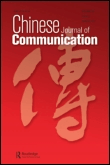
Chinese Journal of Communication
Exploring the Nexus of Communication and Culture in ChinaThe Chinese Journal of Communication, published by Routledge Journals, Taylor & Francis Ltd, has established itself as a pivotal platform for scholarly discourse in the field of communication, particularly within the context of Chinese media and its global interactions. With a notable Q1 ranking in the 2023 Communication category and a commendable Scopus ranking of #77 out of 511 journals, it represents a significant contributor to the advancement of communication studies. The journal's focus extends from theoretical frameworks to empirical research, fostering a comprehensive understanding of the evolving communication landscape. Available in both print (ISSN: 1754-4750) and digital formats (E-ISSN: 1754-4769), the journal does not operate on an Open Access basis, yet it remains a highly sought-after resource for researchers, professionals, and students aiming to explore communication phenomena from a Chinese perspective. Given its publication history converging from 2010 to 2024, it serves as a valuable reference point for ongoing academic investigations and is instrumental in shaping future research directions in this dynamic field.
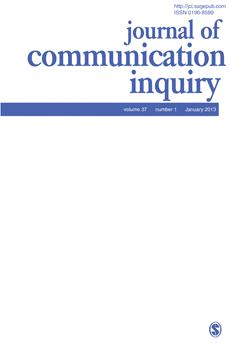
Journal of Communication Inquiry
Cultivating Insightful Perspectives on Communication DynamicsJournal of Communication Inquiry, published by SAGE PUBLICATIONS INC, is a premier interdisciplinary journal that serves as a vital platform for scholars and practitioners in the fields of communication, cultural studies, and the arts and humanities. With a rich history dating back to its inception in 1974, the journal has consistently upheld rigorous academic standards, reflected in its impressive rankings within the Q1 and Q2 quartiles across various disciplines according to the latest metrics. The journal's comprehensive scope encompasses theoretical and empirical research, catering to a diverse readership who are keen to explore contemporary communication issues and cultural dynamics. While the impact factor is not explicitly stated, the journal's Scopus ranks position it favorably within its categories, with notable percentiles that highlight its influence in the academic community. As an essential resource for researchers, professionals, and students alike, the Journal of Communication Inquiry invites contributions that advance the discourse surrounding communication practices and cultural phenomena, contributing to the ongoing dialogue in these evolving fields.

Communications-European Journal of Communication Research
Illuminating Insights in Communication PracticesCommunications-European Journal of Communication Research is a premier journal published by DE GRUYTER MOUTON, dedicated to fostering scholarly discourse in the field of communication studies. With a publication history spanning over four decades, from 1976 through to 2024, this journal serves as a vital resource for researchers and practitioners interested in the latest advancements and theoretical developments in communication. The journal is recognized for its rigorous peer-review process and has earned a commendable reputation, evidenced by its ranking in the Q2 quartile in both Arts and Humanities (miscellaneous) and Communication categories for 2023. Its Scopus rankings signify its relevance and impact, positioning it within the top quartile of the discipline's literature. Although not an open access journal, it provides access to a wide range of research that contributes significantly to the understanding of communication practices across diverse contexts. Scholars, professionals, and students alike will find a wealth of knowledge that not only sharpens their academic pursuits but also enriches practical applications in the communication landscape.
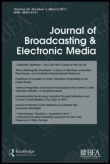
JOURNAL OF BROADCASTING & ELECTRONIC MEDIA
Exploring the Frontiers of Media InnovationThe JOURNAL OF BROADCASTING & ELECTRONIC MEDIA, published by Routledge Journals, Taylor & Francis Ltd, is a premier academic publication in the field of communication, officially recognized in the Q1 category for its exceptional quality and impact. With a rich history dating back to 1985, this journal serves as a vital platform for innovative research and critical discussions surrounding broadcasting and electronic media, addressing contemporary issues in digital communication, media technology, and audience studies. The journal boasts an impressive Scopus rank of #73 out of 511 in the Social Sciences - Communication category, placing it within the top 15% of its field. Researchers, professionals, and students alike benefit from its insightful articles that contribute to understanding the evolving landscape of media and communication. Although it does not currently operate under an Open Access model, its rigorous peer-review process ensures that published works meet high academic standards, sustaining its reputation as a cornerstone for scholarly discourse in the media industry.
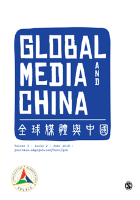
Global Media and China
Unveiling Cultural Narratives through Global Media PerspectivesGlobal Media and China, published by SAGE Publications Ltd, is an esteemed open-access journal dedicated to fostering scholarly dialogue and research in the rapidly evolving dynamics between global media and Chinese communication practices. Launched in 2016, this journal has rapidly ascended within the academic community, achieving a remarkable Q1 ranking in both the Communication and Cultural Studies categories as of 2023, and holding significant positions in the Scopus rankings at the 95th and 81st percentiles respectively. Situated in the United Kingdom, the journal serves as a crucial platform for researchers, professionals, and students seeking to explore the intricate intersections of media influence, cultural policies, and communication trends originating from China. With a clearly defined scope and a commitment to open-access publication, Global Media and China is poised to continue its impactful contribution to global conversations surrounding media studies and cultural contemporary issues through to 2024 and beyond.

Communication & Society-Spain
Connecting Theories and Practices in Communication StudiesCommunication & Society-Spain, published by Universidad de Navarra, is an esteemed open access journal dedicated to advancing scholarship in the dynamic fields of communication and cultural studies. Since its inception in 1988, the journal has maintained a commitment to disseminating high-quality research that engages with contemporary issues and contributes to the evolving discourse around communication theories and practices. With a commendable Q1 ranking in both Communication and Cultural Studies categories, it stands as a prominent source for researchers and professionals alike, reflecting its robust presence in the academic community—evidenced by its Scopus rankings placing it in the top percentiles within both fields. The journal's scope encompasses diverse perspectives and methodologies, thereby fostering interdisciplinary dialogue essential for understanding the complexities of communication in society. With a publication history that spans from 2010 to 2024 and a ranking of #87 out of 1304 in Cultural Studies, our commitment to open access ensures that impactful research is readily available to all, promoting further scholarly engagement and innovation.

Journal of African Media Studies
Transforming the Discourse on African Media Studies.Journal of African Media Studies, published by INTELLECT LTD, stands at the forefront of communication research, focusing on the rich tapestry of media practices and theories across the African continent. Since its inception in 2011, this peer-reviewed journal has dedicated itself to exploring the intricate relationships between media, culture, and society in Africa, contributing significantly to the global discourse on communication. With an impressive impact factor positioning it in Q2 of the Communication category for 2023, and ranking #218 out of 511 in the Scopus Social Sciences Communication field, it offers a rigorous platform for scholars and practitioners alike. The journal's commitment to quality research is evident in its robust editorial process and its regular publication of articles that delve into contemporary issues affecting African media landscapes. Despite being a subscription-based journal, it attracts an engaged readership interested in accessing critical insights and advancing knowledge in media studies. As it converges its timeline towards 2024, Journal of African Media Studies continues to be an essential resource for researchers, professionals, and students eager to contribute to and explore the evolving narratives of African media.
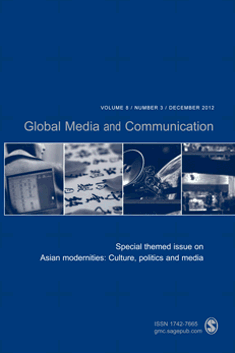
Global Media and Communication
Pioneering Scholarly Discourse in Global Media StudiesGlobal Media and Communication is a premier journal dedicated to advancing the fields of media and communication studies, published by SAGE Publications Ltd. With an ISSN of 1742-7665 and an E-ISSN of 1742-7673, this journal offers a platform for scholarly discourse and innovative research that explores the intricate relationships between global media practices and communication strategies. Recognized as a Q1 journal in both the Arts and Humanities (Miscellaneous) and Communication categories for 2023, it stands out in its commitment to delivering high-quality, peer-reviewed articles that contribute to the understanding of contemporary media landscapes. Located in London, United Kingdom, the journal benefits from being at the heart of cultural and digital innovation. Researchers, professionals, and students can look forward to insightful articles that not only critique existing frameworks but also propose new methodologies, ensuring that Global Media and Communication remains a vital resource for anyone interested in navigating the evolving dynamics of media and communication on a global scale.